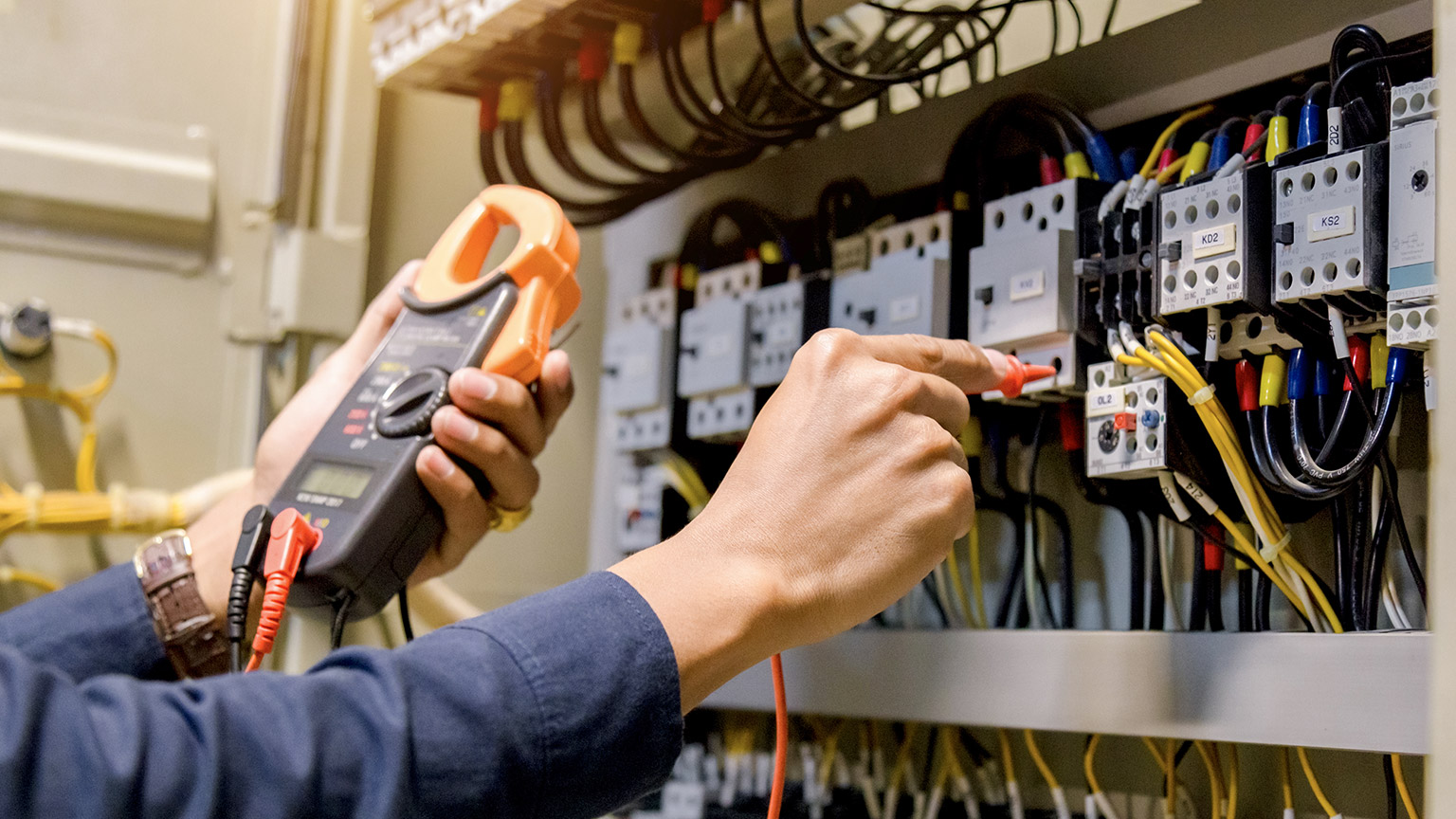What We’re Covering
- specific electrical requirements for installations and equipment in explosive atmospheres
- other special areas.
Explosive Atmospheres
Classification and Zoning
Explosive atmospheres are environments where flammable gases, vapors, or dusts can mix with air in a way that could ignite under certain conditions. Understanding these atmospheres involves classifying them based on the likelihood and persistence of explosive gases or dusts.
AS/NZS 60079 Standards
This standard provides guidelines for the classification and design of electrical installations in hazardous areas. It outlines zoning classifications (Zone 0, Zone 1, Zone 2 for gases; Zone 20, Zone 21, Zone 22 for dusts) and requirements for electrical equipment to ensure safety in these environments.
- Zone 0 – an area in which an explosive gas atmosphere is present continuously or for long periods or frequently.
- Zone 1 – an area in which an explosive gas atmosphere is likely to occur in normal operation occasionally.
- Zone 2 – an area in which an explosive gas atmosphere is not likely to occur in normal operation but, if it does occur, it will exist for a short period only
- Zone 20 - A place in which an explosive atmosphere in the form of a cloud of combustible dust in air is present continuously, or for long periods or frequently.
- Zone 21 - A place in which an explosive atmosphere in the form of a cloud of combustible dust in air is likely to occur in normal operation occasionally.
- Zone 22 - A place in which an explosive atmosphere in the form of a cloud of combustible dust in air is not likely to occur in normal operation but, if it does occur, will persist for a short period only.
Zoning Requirements
- Detailed study of the requirements for each zone, including the types of electrical equipment permitted and the methods for protection (e.g., explosion-proof enclosures, increased safety designs) must be performed before carrying out any work.
- Identification and classification of areas where explosive atmospheres may occur, appropriate PPE, checking overall explosion safety of the workplace and selecting and maintenance of equipment intended for use in classified areas.
Case Study
Scenario: Working in an Explosive Atmosphere

John and Alex are about to start a job on an industrial site, where a new electrical installation is required in an area classified as Zone 1 due to the presence of flammable gases. The site has strict safety protocols to prevent explosions. Before they start work, John checks Alex, who is his apprentice, is prepared for working in this potentially hazardous site.
John: "Good morning, Alex. Today we have an important job to do in a Zone 1 area, which means there's a potential for explosive gases to be present occasionally during normal operations. Before we start, let's review the key points to ensure we’re prepared and safe. Can you explain what Zone 1 means?"
Alex: "Yes, John. Zone 1 is an area where an explosive gas atmosphere is likely to occur in normal operation occasionally."
John: "Exactly. Now, what standard do we follow for working in these hazardous areas?"
Alex: "We follow the AS/NZS 60079 standard. It provides guidelines for the classification, design, selection, installation, and maintenance of electrical equipment in explosive atmospheres."
John: "Good. What are the other zones defined in this standard, and how do they differ?"
Alex: "For gases, there’s Zone 0, where explosive gases are present continuously or for long periods. Zone 2 is where explosive gases are not likely to occur in normal operation, but if they do, it will be for a short period. For dusts, there’s Zone 20, similar to Zone 0 but for dust, Zone 21, similar to Zone 1, and Zone 22, similar to Zone 2."
John: "That's right. In our Zone 1 area, what are some of the safety measures we need to implement before starting our work?"
Alex: "We need to conduct a detailed study of the area’s requirements, ensure that we have the appropriate PPE, and verify the explosion safety of the workplace. We also need to select and maintain equipment intended for use in classified areas."
John: "Correct. Now, let's talk about the equipment. What characteristics should the electrical equipment we use in this zone have?"
Alex: "The equipment should be explosion-proof or designed with increased safety in mind. It must be certified for use in explosive atmospheres and meet the IP ratings suitable for protection against dust and moisture."
John: "Very good. When working in these areas, why is it important to document all our activities and maintenance logs?"
Alex: "Documenting our activities and maintenance logs ensures accountability, allows us to track the condition of the equipment, and helps in future inspections and audits to maintain ongoing safety compliance."
John: "Excellent, Alex. One last thing, what should we do if we notice any wear or damage during our inspection?"
Alex: "If we notice any wear or damage, we should stop work immediately, report it, and take the necessary steps to repair or replace the affected components to maintain safety."
John: "Perfect. Let’s gather our tools and PPE, double-check our safety procedures, and head to the site. Remember, safety is our top priority."
Alex: "Got it, John. I’m ready."
John: "Great. Let's go ensure everything is done safely and correctly."
Special Areas
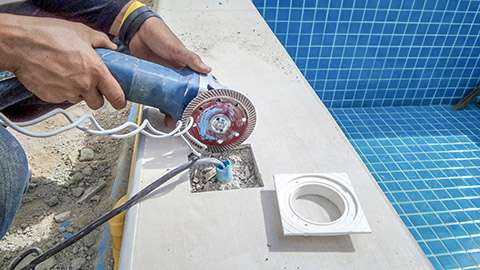
Swimming Pools
Electrical installations in swimming pool areas must comply with specific safety standards to protect against electric shock in wet environments. Requirements include the use of RCDs (Residual Current Devices) and appropriate IP (Ingress Protection) ratings for electrical equipment.
Fuel Stations
These areas pose a risk due to the presence of flammable fuels. Electrical installations here require equipment with suitable explosion protection measures and strict adherence to safety protocols to prevent ignition.
Grain Handling Facilities
Grain dust can be highly explosive. Electrical installations must be designed to minimize the risk of dust ignition, with equipment that prevents sparks and meets stringent standards for hazardous areas.
Activity
You are an apprentice electrician working on a project to install lighting and electrical outlets around a residential swimming pool in New Zealand. Your supervisor has emphasized the importance of adhering to safety standards to protect against electric shock in this wet environment.
Before starting the installation, your supervisor asks you to research and identify the types of electrical fittings suitable for swimming pool areas. These fittings must comply with New Zealand safety standards, including the use of Residual Current Devices (RCDs) and appropriate Ingress Protection (IP) ratings.
- Use the internet to find out what electrical fittings are available in New Zealand that are suitable for swimming pool areas. Look for fittings that comply with the requirements of using RCDs and appropriate IP ratings.
Key Points to Consider
- RCDs (Residual Current Devices): Essential for protecting against electric shock by quickly disconnecting the circuit if a fault is detected.
- IP Ratings (Ingress Protection): Indicates the level of protection against dust and water. Higher IP ratings are necessary for wet environments like swimming pool areas.
- What types of RCDs are recommended for swimming pool installations in New Zealand?
- What are the minimum IP ratings required for lighting fixtures and electrical outlets in pool areas?
- Are there specific brands or products that are commonly used for these installations?
Equipment Standards
Standards for Hazardous Environments
The AS/NZS 60079 series specifies requirements for electrical equipment intended for use in explosive atmospheres.
Types of Protection
There are various types of protection methods used in hazardous areas, such as:
- Enclosures designed to contain and withstand internal explosions.
- Equipment designed with additional protective measures to prevent sparks or excessive temperatures.
- Electrical circuits and equipment designed to prevent sparks that could ignite explosive atmospheres.
Certification and Compliance
It is important that electrical equipment is certified to meet these standards and that installations comply with local regulatory requirements to minimize risks and ensure safety.
Activity
- Choose one type of protection method from the list below to research further:
- Enclosures designed to contain and withstand internal explosions.
- Equipment designed with additional protective measures to prevent sparks or excessive temperatures.
- Electrical circuits and equipment designed to prevent sparks that could ignite explosive atmospheres.
- Conduct research to find specific examples of equipment that use the chosen protection method.
- Explain how the chosen protection method works and why it is important.
- Look into the certification process for this type of equipment, including what standards it must meet and any regulatory requirements in New Zealand.
- In the discussion forum give:
- A brief explanation of the protection method you selected.
- Examples of equipment that use this method, including images and specifications.
- Details on the certification process and compliance requirements for this equipment in New Zealand.
Remember to read and respond to at least two posts made by your classmates. The link to the forum can be found here - 4.2.1 Activity - Equipment Standards for Hazardous Environments.

What We’re Covering
- Electrical protection measures and IP ratings for electrical fittings and equipment in damp situations.
Types of Electrical Protection
Residual Current Devices (RCDs)
The application of Residual Current Devices (RCDs) in areas prone to moisture is crucial for several reasons, emphasizing the importance of electrical safety:
Protection Against Electric Shock
- Moisture increases the risk of electrical faults and leakage currents. Water can compromise insulation, leading to potential contact with live parts, which can result in electric shock.
- RCDs monitor the current flowing through a circuit and rapidly disconnect the power if they detect even a small imbalance (such as through a person coming into contact with an exposed conductor).
- This swift disconnection significantly reduces the risk of severe electric shock and can potentially save lives in scenarios where wet conditions increase the likelihood of such incidents.
Compliance with Electrical Regulations
- Many electrical safety standards and regulations, such as AS/NZS 3000 in Australia and New Zealand, mandate the use of RCDs in specific environments, particularly where there is a higher risk of moisture exposure (e.g., bathrooms, kitchens, outdoor areas).
- Compliance ensures that installations meet minimum safety requirements and protect against the hazards associated with electrical faults in damp or wet conditions.
Enhanced Safety for Users and Equipment
- By installing RCDs in damp environments, electrical systems are safeguarded against faults that could otherwise lead to fires or damage to equipment.
- Users benefit from increased protection against potentially life-threatening electric shocks, promoting a safer environment for both residents and workers.
Prevention of Ground Faults
- In damp conditions, the likelihood of ground faults (where unintended electrical paths to ground are created) increases. RCDs can detect these faults and disconnect power, mitigating the risk of electrical fires or damage caused by ground faults.
Standard Practice in Electrical Design
- Using RCDs in damp areas has become a standard practice in electrical design and installation due to the proven effectiveness in reducing accidents and complying with safety standards.
- Professionals in the electrical industry are trained to incorporate RCD protection as part of their standard procedures, ensuring consistent safety practices across various installations.
In summary, the application of RCDs in areas prone to moisture is vital because it significantly reduces the risk of electric shock, ensures compliance with safety regulations, enhances overall safety for users and equipment, prevents ground faults, and aligns with industry standards for electrical design and installation.
Circuit Breakers
Circuit breakers are devices that automatically interrupt the flow of electric current when it exceeds a safe level. Types include miniature circuit breakers (MCBs) and residual current circuit breakers with overcurrent protection (RCBOs).
Circuit breakers installed in damp areas should have an appropriate IP (Ingress Protection) rating to protect against water ingress. For example, IP44 or higher is typically recommended for areas exposed to splashes or moisture.
The materials used in the construction of the circuit breaker should be resistant to corrosion caused by damp conditions, ensuring longevity and reliability.
Electrical professionals should choose circuit breakers that effectively protect electrical circuits from overcurrents and provide reliable operation in damp environments, thereby enhancing safety and minimizing risks associated with electrical faults in such conditions.
IP Ratings
Understanding IP Ratings
IP (Ingress Protection) ratings indicate the degree of protection provided by an enclosure against intrusion of solid objects (like dust) and water.
We’ll look more closely at this in a following topic.
Activity
Read these case studies to gain practical insights into the application of electrical protection methods in various real-world scenarios, especially the importance of compliance with safety standards and regulations.
Case Study
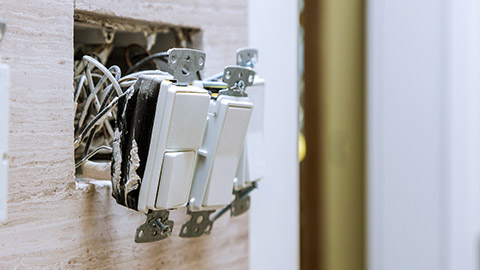
Installation of IP-Rated Equipment in a Residential Bathroom
A family in Wellington, New Zealand, is renovating their home and updating the bathroom to ensure it meets the latest safety standards. The renovation includes installing new electrical sockets, switches, and lighting fixtures.
The electrical contractor assessed the bathroom and selected electrical equipment with an IP44 rating to protect against water splashes. For example, they installed IP44-rated sockets near the sink and shower area to ensure safety against moisture exposure. The lighting fixtures were also chosen based on their IP rating, ensuring they were safe for use in a damp environment.
The installation met the AS/NZS 3000 standards, providing the family with enhanced safety against electric shock. The IP-rated equipment ensured that moisture did not compromise the electrical components, thereby reducing the risk of electrical faults and potential hazards.
Read the question below. Before you click the + button, think about how you would answer the question, then compare your thoughts with the provided answer.
IP44-rated devices protect against water splashes, ensuring that moisture does not compromise the electrical components, thereby reducing the risk of electrical faults and potential electric shock. This selection complies with the AS/NZS 3000 standards for safety in wet environments.
Case Study

Application of RCDs in a Commercial Kitchen
A restaurant in Auckland undergoes an electrical upgrade to enhance safety in its commercial kitchen, an area prone to moisture and potential electric shock hazards. The electrical contractor installed Residual Current Devices (RCDs) to monitor the electrical circuits in the kitchen. These RCDs were chosen because they could quickly disconnect the power if any imbalance in the current was detected, such as through a person coming into contact with an exposed conductor.
The installation of RCDs provided an additional layer of safety for the kitchen staff, significantly reducing the risk of severe electric shock. The restaurant complied with the AS/NZS 3000 regulations, ensuring the electrical system was up to standard and providing a safer working environment.
Read the question below. Before you click the + button, think about how you would answer the question, then compare your thoughts with the provided answer.
RCDs enhance safety in moist environments like commercial kitchens by quickly disconnecting the power if any imbalance in the current is detected. This rapid disconnection significantly reduces the risk of severe electric shock, ensuring the electrical system complies with AS/NZS 3000 regulations and providing a safer working environment for the kitchen staff.
Case Study

Using Circuit Breakers with IP Ratings in Outdoor Installations
A property management company in Christchurch is responsible for the maintenance of a residential complex. They plan to install outdoor lighting and electrical outlets in the common garden area, which is exposed to rain and moisture.
The electrical team selected circuit breakers with an IP65 rating for the outdoor installations to ensure they were protected against water ingress. They used materials resistant to corrosion and suitable for the damp conditions outdoors. Miniature Circuit Breakers (MCBs) and Residual Current Circuit Breakers with Overcurrent Protection (RCBOs) were installed to safeguard the electrical circuits from overcurrents and faults.
The installation of IP65-rated circuit breakers ensured that the electrical system was protected against moisture, preventing potential short circuits and electrical faults. The use of corrosion-resistant materials extended the lifespan of the electrical components, providing reliable and safe operation in the outdoor environment.
Read the question below. Before you click the + button, think about how you would answer the question, then compare your thoughts with the provided answer.
No. While an IP65-rated circuit breaker provides significant protection against water jets and dust ingress, it is not considered waterproof. It can withstand moderate exposure to water but is not designed for immersion or continuous submersion. For installations requiring protection against complete submersion, higher IP ratings such as IP67 or IP68 would be necessary according to New Zealand guidelines.
Case Study

Compliance with Standards in a Swimming Pool Area
A new community swimming pool is being built in Dunedin, and the project includes the installation of lighting and electrical outlets around the pool area. The electrical contractor ensured all installations complied with AS/NZS 3000 and AS/NZS 60079 standards. They installed RCDs to protect against electric shock and selected equipment with appropriate IP ratings, such as IP67-rated lights and sockets, to withstand the wet environment. Additionally, they used explosion-proof enclosures for any electrical equipment near the pool to prevent any potential hazards.
The swimming pool area was equipped with a safe and compliant electrical system. The use of RCDs and IP67-rated equipment minimized the risk of electric shock and protected the equipment from moisture-related damage. The project met all regulatory requirements, ensuring a safe environment for the community.
Read the question below. Before you click the + button, think about how you would answer the question, then compare your thoughts with the provided answer.
This would be unusual and unnecessary. Here’s why:
- IP68 Definition: An IP68 rating indicates that the equipment is dust-tight (6) and can withstand continuous immersion in water beyond 1 meter depth (8).
- Typical Requirements for Pool Installations: In pool installations, while equipment needs to be water-resistant due to the moist environment, the need for continuous immersion protection (IP68) is rare. Most pool installations typically require equipment with IP ratings that protect against occasional splashes (e.g., IP44 or IP65), as the equipment is generally installed in areas where continuous immersion is not expected.
- Cost and Practicality: IP68-rated equipment tends to be more expensive and may not be justified for pool installations where IP44 or IP65 ratings provide sufficient protection against splashes and moisture ingress.
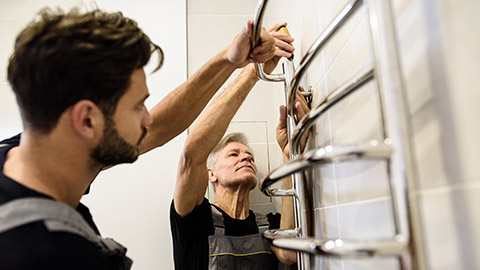
What We're Covering
- Damp situations
- AS/NZS 3000:2018 Section 6
Zones, Electrical Protection, IP Ratings and Equipotential Bonding
In previous learning content you learnt about IP ratings and some of the legal requirements around the choice and placement of electrical equipment and fittings in damp zones.
Electrical installations in damp or wet environments present unique safety challenges due to the increased risk of electric shock and equipment damage. Section 6 of the AS/NZS 3000:2018 outlines the minimum criteria for choosing and installing electrical equipment in areas prone to the impact of water or elevated humidity levels (damp conditions). In the standards you will find guidance on:
Proper Wiring and Installation
Use wiring and cables specifically designed and constructed for damp locations, such as those with moisture-resistant insulation and corrosion-resistant conductors. Seal cable entry points to prevent water penetration.
Activity
Enclosures and Covers
Install weatherproof enclosures and covers for electrical devices, outlets, switches, and junction boxes to shield them from moisture.
Ensure that covers have effective seals or gaskets to maintain watertightness.
ELEVATED INSTALLATIONS
Elevate electrical components above potential water sources, such as outlets in basements, to prevent water contact and damage.
Activity
Sealant and Insulation
Apply appropriate sealants and insulation around electrical boxes, conduits, and cable entry points to create a barrier against moisture infiltration.
BATHROOM AND KITCHEN CONSIDERATIONS
Install electrical outlets with RCDs in bathrooms, kitchens, and other areas with water sources. Keep electrical devices away from sinks, bathtubs, and showers to avoid splashing.
VENTILATION AND DRAINAGE
Ensure adequate ventilation to prevent condensation and moisture build-up.
Ensure effective drainage systems to prevent water accumulation near electrical installations.
EQUIPMENT SELECTION
Choose electrical devices, fixtures, and appliances rated for damp or wet locations to prevent malfunction or corrosion.
Activity
Regular Inspection and Maintenance
Conduct routine inspections to identify signs of moisture damage, such as rust, corrosion, or degraded insulation.
Perform maintenance promptly to address any issues and ensure ongoing safety.
Classification of Zones
During earlier courses you also came across the concept of Zones (0, 1, 2 and 3) to classify areas within damp spaces.
Watch this video explaining bathroom zones.
In AS/NZS 3000:2018, zones are defined within damp areas like bathrooms to regulate the installation of electrical fittings based on proximity to water sources and the likelihood of moisture exposure. These zones are connected to Ingress Protection (IP) ratings, which ensure appropriate protection against water.
The zones are as follows:
- Zone 0: This zone covers the interior of a bath or shower base. Fittings here must be Low Voltage (SELV) with a maximum of 12V. The minimum IP rating is IPX7 (IP67).
- Zone 1: Directly above the bath or shower up to 2.25m from the floor (or the ceiling if lower), with sealed light fittings requiring a minimum IPX4 (IP44) rating. (IPX5 for communal baths/showers.) Specific dimensions apply for baths, baths with showers, and standalone showers.
- Zone 2: Stretching 0.6m outside the bath or shower, this zone extends 2.25m from the floor. Additionally, it includes the area 600mm from the sink tap. All light fittings here must be sealed with an IPX4 rating. (IPX5 for communal baths/showers.)
- Zone 3: This area lies outside Zone 2, and no specific IP rating is mandated, except in communal baths/showers which must be IPX5 rated. It covers the space between external vertical planes and extends 2.4m from Zone 2's boundary.
Note
The zones do not extend beyond the boundaries of the room.
The zoning system, coupled with IP ratings, ensures the appropriate protection of electrical fittings against water and moisture exposure in different areas of damp environments.
Electrical Protection and Ingress Protection
Electrical protection and IP (Ingress Protection) ratings play a crucial role in ensuring the safety and performance of electrical fittings and equipment, especially in damp or wet environments. These ratings help consumers and professionals make informed decisions about the suitability of electrical products for specific conditions.
Types of Electrical Protection
Double Insulation (Class II)
Double insulation is a protective measure where the device or equipment has two layers of insulating material. This design prevents the exposure of live parts to users and provides an extra layer of protection against electric shock. Devices with this protection are often marked with a symbol consisting of two squares, one inside the other.
RCDS
RCDs are designed to quickly disconnect the power supply when a leakage current is detected. They offer enhanced protection against electric shock in damp conditions by detecting imbalances between incoming and outgoing currents.
Activity
Provide a summary of the use of RCDs in relation to the installation of socket outlets in different zones according to AS/NZS 3000:2018. Email your tutor when you have completed it.
IP Ratings
IP ratings indicate the degree of protection provided by enclosures of electrical equipment against the intrusion of solid objects (like dust) and liquids (like water). The IP rating is composed of two digits, each representing a specific level of protection:
- The first digit ranges from 0 to 6 and indicates protection against solid objects.
- The second digit ranges from 0 to 9 and indicates protection against liquids.
IP Ratings for Damp Situations
For electrical fittings and equipment suitable for use in damp situations, you should look for IP ratings that offer adequate protection against moisture.

Here are some common IP ratings that you might encounter.
- IPX4 - This rating indicates protection against splashing water from any direction. It's suitable for damp environments where water might be present due to condensation or light splashing.
- IPX5 - This rating offers protection against water jets from any direction. It's suitable for areas where more substantial water exposure is expected, such as from high-pressure cleaning.
- IPX6 - This rating provides protection against powerful water jets and is suitable for harsher wet conditions.
- IPX7 - This rating indicates protection against temporary immersion in water up to 1 meter for a specified duration. It's suitable for environments where the equipment might be submerged briefly.
- IPX8 - This rating offers protection against continuous immersion in water under conditions specified by the manufacturer. It's suitable for equipment that needs to be submerged for extended periods.
Equipotential Bonding for Damp Areas
Equipotential bonding, as described in Section 5.6.1 of AS/NZS 3000, is a fundamental safety practice in damp areas, aimed at reducing risks arising from voltage differences among exposed conductive components of electrical equipment and other conductive elements. In simpler terms, when you touch a faulty electrical device (such as a dishwasher) and also come into contact with non-electrical metal in a damp setting, the voltages may not be the same. Without proper equipotential bonding, this discrepancy could lead the voltage to flow through you to reach the ground!

The term "equipotential" literally means equalizing electrical potentials. Conductive parts are interconnected to balance out their potentials, thereby enhancing safety. Bonding typically involves an earth wire establishing secure contact with exposed extraneous conductive parts. This wire is usually connected directly to the main earth bar of the main switchboard and subsequently to the earth electrode.
Bonding conductors are typically 4mm2 in cross-section area with green/yellow insulation and are a normal part of an electrical installation. Their use and application are outlined in the AS/NZS3000:2018.
Examples Of Equipment Requiring Equipotential Bonding
Conductive metal pipes that carry water (including taps) and metal surfaces like sinks. Not necessary when pipes are insulated by non-conductors (plastic pipes) from the earth mass.
Other conductive piping lacking alternative grounding methods and related exposed conductive surfaces.
Concrete reinforcement forming floors or walls in rooms with showers or baths, as well as the shell and enclosure of swimming or spa pools.
Activity
Test yourself by completing this quiz based on today’s learning. Download the worksheet here.
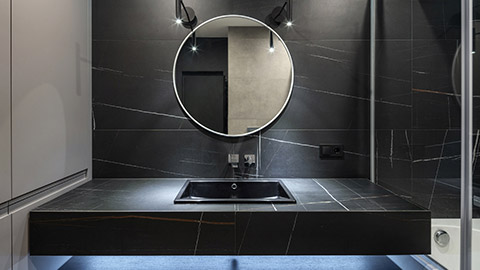
What We're Covering:
- Task - designing a bathroom electrical layout that adheres to safety regulations and zoning guidelines.
This lesson continues looking at electrical installations in wet or damp areas.
Activity
You can complete the following exercise on this worksheet. There is a 3D picture at the end of the worksheet for you to draw on.
Apply the AS/NZS 3000 standard to design a bathroom electrical layout that adheres to safety regulations and zoning guidelines.
- Refer to the regulations and requirements for electrical installations in bathrooms according to AS/NZS 3000. Familiarise yourself with the different zones in a bathroom and the safety measures associated with each zone.
- Examine the 3D bathroom layout provided, noting any potential hazards or considerations related to water sources and wet areas. Potential hazards include…
- Divide the bathroom layout into different zones according to the regulations. Shade each zone a different colour and write in its dimensions (these do not have to be to scale).
- Plan and strategically place (draw) electrical installations within each zone, while adhering to the regulations. Consider safety, convenience, and the overall layout of the bathroom. These electrical installations should include:
- Power sockets - Show the placement of power sockets in accordance with zone requirements, e.g., you might include power sockets near vanities and countertops, following the specified distances from water sources.
- Light switches - Indicate the location of light switches, considering convenience and safety. Make sure switches are appropriately positioned to avoid contact with wet hands.
- Heated towel rail - Show the position of a heated towel rail, taking into account its distance from water sources and any specific regulations.
- Exhaust fan - Indicate the placement of an exhaust fan, considering proper ventilation and compliance with zoning guidelines.
- Ceiling or wall-mounted light fixtures - Show the placement of ceiling or wall-mounted light fixtures, ensuring they are positioned safely and effectively illuminate the bathroom.
- Shaver outlets - Include shaver outlets in suitable locations, adhering to regulations and safety standards.
- Complete the tables in the worksheet explaining the rationale behind your placement of the electrical installations.
- Have you followed the AS/NZS 3000 standard? Have your classmates adhered to the standard? Are there any improvements you would make?
- Share your completed bathroom electrical layout with your tutor and classmates in the class forum, highlighting the zoning, installation placements, and safety considerations based on the AS/NZS 3000 standard. You can find the link to the forum here - 4.2.3 Activity - Electrical Installations in Damp Situations II.
This is the picture you will be drawing on:
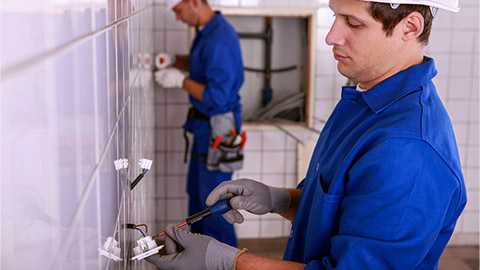
What We’re Covering
- Identify the factors influencing the choice of electrical equipment for damp environments.
- Apply best practices for positioning and mounting electrical fittings in damp areas.
- Ensure compliance with AS/NZS 3000 standards and local regulations for electrical installations in damp zones.
Selection Criteria
The following criteria need to be considered when choosing electrical equipment and fittings in areas where water, moisture and dampness could be an issue.
IP Ratings
- Understanding IP (Ingress Protection) ratings and their importance in selecting equipment for damp environments.
- For example: IP44 for bathrooms, IP67 for outdoor use
Material Durability
- Selecting equipment made from corrosion-resistant materials such as stainless steel or plastic.
- Importance of UV resistance for outdoor installations to prevent material degradation.
Moisture Resistance
- Ensuring electrical equipment has proper seals and gaskets to prevent moisture ingress.
- The role of coatings and treatments in enhancing moisture resistance.
Load Capacity
- Assessing the electrical load requirements and selecting equipment that can handle the expected load without overheating.
Manufacturer's Specifications
- Following manufacturer guidelines for equipment suitable for damp conditions.
- Reviewing product datasheets for environmental ratings and suitability.
Installation Guidelines
As an electrician you may be working to plans designed by another professional, but you should still check the following when installing fittings or equipment:
Positioning
- Avoiding areas where water accumulation is likely, such as below gutters or near sprinkler systems.
- Elevating electrical fittings above ground level to prevent contact with pooled water.
Mounting
- Using waterproof mounting boxes and enclosures to protect connections.
- Ensuring secure and stable mounting to withstand environmental conditions such as wind and rain.
Cable Management
- Using conduit and cable glands to protect wiring from moisture.
- Ensuring proper sealing of cable entries and exits to prevent water ingress.
Ventilation
- Ensuring adequate ventilation for equipment that generates heat to prevent condensation buildup.
Regular Maintenance
- Implementing a maintenance schedule to check for signs of moisture ingress and corrosion.
- Replacing or repairing damaged seals and gaskets promptly.
Regulatory Compliance
By now you should be very familiar with the requirements of the standards, but you also need to make sure that you are complying with any local bye laws or requirements.
AS/NZS 3000 Standards
- Understanding key provisions of AS/NZS 3000 related to electrical installations in damp zones.
- Specific requirements for different types of damp areas (e.g., bathrooms, kitchens, outdoor areas).
Local Regulations
- Ensuring compliance with additional local regulations and codes of practice.
- Keeping updated with changes in standards and regulations to maintain compliance.
Inspection and Certification
- The role of regular inspections and certifications in ensuring ongoing compliance and safety.
- Documenting installations and modifications for compliance records.
Case Study
Equipotential Bonding in Spa Pool Installation
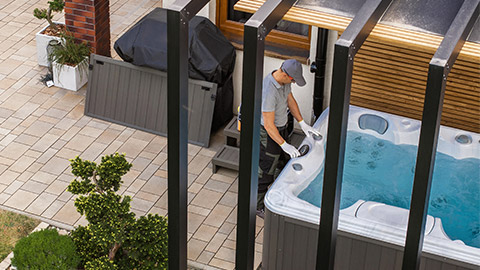
Liam, an apprentice electrician, is working with his supervisor, Suz, on installing a new spa pool at a residential property in Auckland, New Zealand. The homeowner, Mr. Smith, is excited about the new addition to his backyard and wants to ensure everything is installed safely and meets the required standards. Suz emphasizes the importance of equipotential bonding to ensure the safety of the installation.
Site Details
- Location: Residential backyard in Auckland
- Spa Pool: An 8-seater spa pool with an integrated heating system
- Electrical Supply: The spa pool requires a dedicated electrical circuit
- Ground Conditions: The backyard has a concrete pad where the spa pool will be placed
Equipotential Bonding Requirements
Suz explains to Liam that equipotential bonding is crucial to prevent electric shock by ensuring that all conductive parts within the vicinity of the spa pool are at the same electrical potential. This includes:
- Metal Parts of the Spa Pool: The metal frame and any other exposed metal parts
- Water: As water is conductive it must be bonded to ensure it is at the same potential as other conductive parts
- Surrounding Structures: Any metal fences, pipes, or other conductive structures within reach of the spa pool must also be bonded
Installation Process
- Assessing the Site: Suz and Liam start by inspecting the site. They identify all the conductive parts that need to be bonded, including the spa pool's metal frame, the metal steps, and a nearby metal fence.
- Running the Circuit: Liam installs a dedicated electrical circuit from the main switchboard to the spa pool location, ensuring it meets the requirements of the New Zealand Electrical Code of Practice.
- Connecting the Equipotential Bonding Conductors: They run bonding conductors from the main earth bar to all the identified conductive parts. This includes connecting to the metal frame of the spa pool, the metal steps, and the nearby fence.
- Verification: Suz supervises Liam as he checks all connections to ensure they are secure and that the bonding conductors are continuous and unbroken.
- Testing: After completing the installation, they perform tests to verify that all bonded parts are at the same potential. They use a continuity tester to check the connections and ensure there is no resistance between the bonded parts.
- Documentation: Suz makes a detailed record of the installation process, including the materials used, the locations of the bonding conductors, and the test results. She explains to Liam the importance of this documentation for future reference and compliance with safety standards.
Activity
Answer the following questions based on the case study above. You will be able to type your answers and then save them as a pdf. You can then bring them to class and ask your tutor for feedback on them.
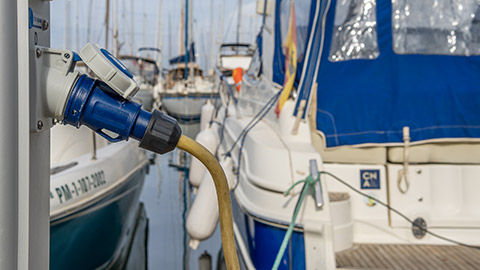
What We’re Covering
- Identify the specific requirements for relocatable premises.
- Identify the specific requirements for electrical installations in marine environments.
- Apply standards for electrical safety in medical facilities.
- Implement guidelines and precautions for high voltage electrical work.
- Understand the electrical requirements and safety measures for temporary installations at construction and demolition sites.
Relocatable Premises
Relocatable premises in New Zealand include the following:
- Vehicles such as caravans, camper vans, motor homes, camper trailers, livestock or car transporters with accommodation included.
- Vehicles such as food and drink vending vans and trailers, walk-through educational display caravans and trailers, mobile classrooms and television outside broadcast vans.
- Relocatable homes, transportable huts, and tents for accommodation.
- Temporary site offices, cloakrooms, meeting offices, dormitories, canteens, toilets or other facilities provided on construction and demolition sites (Note: we’ll look at specific construction or demolition sites in another part of this content).
- Display units not intended for occupation, e.g., mobile electronic score boards and advertising signs, mobile traffic information signs.
- Mobile medical connectable installations.
Not included in the definition:
- Transportable structures with a permanently connected electricity supply and not intended to be relocated, e.g., tramcars, buses or caravans rendered immobile, and transportable sheds.
The relevant standard for relocatable premises is AS/NZS 3001:2001 Electrical installations - Relocatable premises (including caravans and tents) and their site installations. “If it can move – 3001 applies”.
Watch
Tiny House Electrical Wiring
This video provides an overview of the NZ electrical requirements for a tiny home. Note: it references an older version of the standard mentioned above.
Expected Duration: 14:18 minutes
Questions
Pre Watch Question: As you listen make a note of any differences from electrical installations where AS/NZS 3000:2018 (Wiring Rules) applies.
Some key points to note about relocatable premises:
- Inlets (male plug) should be wired directly to an RCD (Type RCBO, 16 amp) replacing a main switch.
- Each final sub-circuit must have its own circuit breaker.
- All mains wiring must be separate and isolated from the 12 volt DC wiring.
- The wiring must be 7-stranded (usually 1.5mm minimum).
- Wiring must be protected where it passes through the chassis.
- Wiring must be separated from any polystyrene insulation.
- The chassis must be earthed (use 6mm green conduit wire to the switchboard).
- The maximum resistance from the earth pin of the supply lead plug to any part of the chassis = 0.5 ohms.
- If a backup mains supply (generator or inverter) is to be connected, a changeover switch will often be needed although it is possible to just swap plugs.
There are also requirements regarding how the transportable is plugged into the supply via its supply lead:
- Minimum supply lead length for caravan parks is 10 metres (no minimum elsewhere).
- Supply lead maximum length (1.5mm flexible cable) should be 25 metres.
- The socket outlet supplying the transportable must be individually RCD and overload protected and must have an isolating switch adjacent to the socket (must be on its own circuit from the switchboard).
Marinas and Pleasure Craft
Unlike household electrical wiring, the electrical wiring and equipment on boats has to contend with a corrosive marine environment that requires regular inspection and maintenance. Any boat requiring a connection to shore power must have and display a current Electrical Warrant of Fitness. All shore power modules are protected by a Residual Current Device.
Requirements for Electrical Installations in Marine Environments:
- Corrosion Resistance: Importance of using corrosion-resistant materials and components due to the salty and humid conditions in marine environments.
- IP Ratings: Selection of equipment with high IP ratings to protect against water ingress.
- Isolation and Earthing: Proper isolation of electrical systems and effective earthing to prevent electric shock and galvanic corrosion.
- Regulations and Standards: Compliance with standards such as AS/NZS 3004 for electrical installations in marinas and pleasure craft.
Activity
Use the internet to find out:
- The IP ratings required for marine environments.
- The types of plugs and sockets required for marine environments.
- The types of corrosion-resistance parts and fittings that are available in New Zealand.
Patient Treatment and Electro-Medical Areas
There are special requirements for new electrical installations and alterations and repairs of patient areas in existing electrical installations where it has been determined that low-voltage medical electrical equipment will be used on a patient. This covers special patient areas, including patient homes and transportable vehicles. It also contains requirements for identification, inspection and testing of patient areas. This is particularly important for situations where patients depend on medical devices that must be continuously supplied by electricity.
Standards for Electrical Safety in Medical Facilities:
- Patient Safety: Ensuring patient safety by implementing isolated power supplies and medical-grade RCDs to prevent electric shock.
- Equipment Standards: Use of medical-grade electrical equipment that meets stringent safety standards.
- Emergency Power Systems: Installation of reliable emergency power systems to ensure continuous operation of critical medical equipment.
- Compliance with AS/NZS 3003: Adhering to the specific requirements outlined in AS/NZS 3003 for electrical installations in patient treatment areas.
Case Study

Electrical Safety in Medical Facilities
Healthy Hospital is a new medical facility in New Zealand, aiming to provide top-notch healthcare services. As an electrician tasked with the electrical installations, you must ensure the facility meets the highest safety standards to protect patients, staff, and visitors. Your focus areas include patient safety, equipment standards, emergency power systems, and compliance with AS/NZS 3003.
You have been assigned to work on the following areas:
- Implementing Isolated Power Supplies:
- Identify the areas within the hospital that require isolated power supplies.
- Design a layout for the isolated power systems, considering the number of patients and equipment in each area.
- Install and test the isolated power supplies to ensure they function correctly.
- Installing Medical-Grade RCDs:
- Select appropriate medical-grade RCDs for different sections of the hospital.
- Plan the installation process to minimize disruption to ongoing medical activities.
- Test the RCDs to ensure they provide the expected protection.
- Ensuring Equipment Standards:
- Conduct a thorough inspection of all electrical equipment to confirm they meet medical-grade standards.
- Replace any non-compliant equipment with suitable alternatives.
- Create a maintenance schedule to regularly check and verify the standards of the equipment.
- Designing Emergency Power Systems:
- Calculate the power requirements for all critical medical equipment.
- Design an emergency power system, including generators and backup batteries, to cover these needs.
- Install the emergency power system and conduct regular drills to ensure staff are trained in its use.
Adhering to AS/NZS 3003:
- Review the AS/NZS 3003 guidelines and ensure all installations meet these requirements.
- Document the installation process and compliance checks.
- Schedule periodic reviews to ensure ongoing compliance with the standards.
Answer the following questions relating to electrical fittings for patient treatment areas. You can use the internet to help you. When you have completed the task, save what you wrote and take it to class to discuss with your tutor.
High Voltage Installations
This was covered in the module on Electrical Safety, Power generation, Legislation and Basic Practices earlier in this programme. Refer back to the learning content there to refresh your memory on working with high voltages. Here’s a reminder of what is important.
Guidelines and Precautions for High Voltage Electrical Work:
- Safety Protocols: Strict adherence to safety protocols to protect against the dangers of high voltage, including arc flash and electrocution.
- Insulation and Clearance: Ensuring proper insulation and maintaining adequate clearance distances to prevent accidental contact.
- Protective Equipment: Use of appropriate personal protective equipment (PPE) and safety gear.
- Regulatory Compliance: Following regulations and standards such as AS/NZS 7000 for high voltage installations to ensure safety and reliability.
Construction and Demolition Sites
Equipment on these sites often comes from various sources, making maintenance and testing challenging. These are the important things to consider when working on construction and demolition sites.
Electrical Requirements and Safety Measures for Temporary Installations:
- Temporary Power Distribution: Designing and installing temporary power distribution systems that are robust and safe for use in dynamic construction environments.
- Temporary Supply Switchboards must be inspected and certified regularly.
- RCD Protection: Use of RCDs to protect against electric shock and other hazards in temporary installations.
- Use with power tools; conduct regular tests.
- Site Safety: Implementing site safety measures such as proper signage, barriers, and regular inspections to prevent electrical accidents.
- Conduct daily inspections and ensure work areas are free from hazards.
- Use qualified personnel for installation and maintenance; avoid tampering with circuits.
- Avoid overloading and improper connections; use correct plugs.
- Turn off tools and sockets before plugging/unplugging.
- Personal Wellbeing: Avoid working under the influence of substances; take breaks to prevent fatigue.
- Inspect tools before use; conduct three-monthly inspections
- Extension Cords: Perform regular inspections; avoid damage and proper storage.
- Testing and Tagging for detecting non-visible faults; required every three months.
- Compliance with AS/NZS 3012: Adhering to the specific requirements outlined in AS/NZS 3012 for electrical installations on construction and demolition sites.
Activity
Find out what a ‘builder’s temporary’ is by searching this page on the WorkSafe website: Electrical safety on small construction sites | WorkSafe
The information on this part of the WorkSafe site also provides a useful review on the content we have covered on this topic so far.
